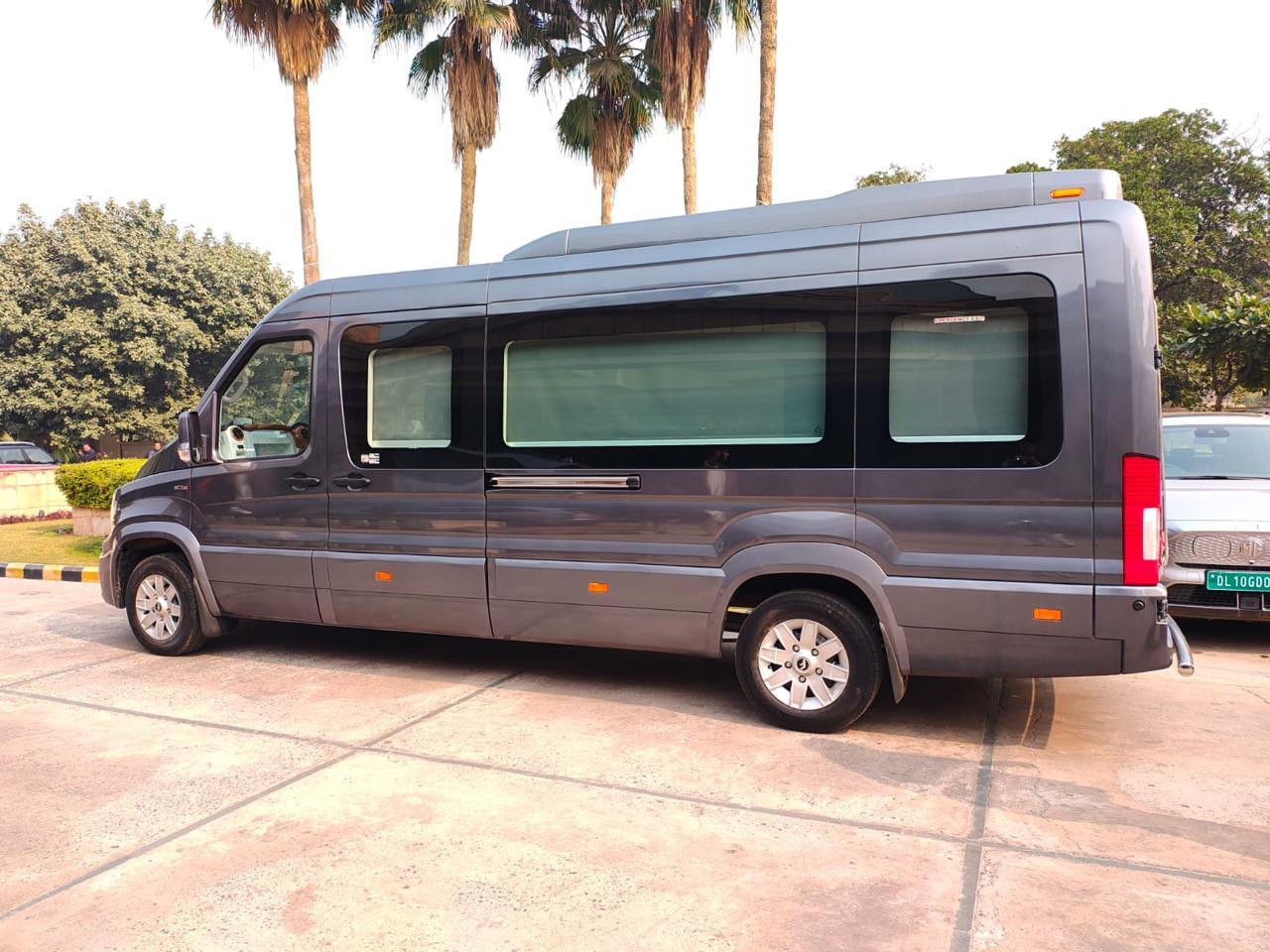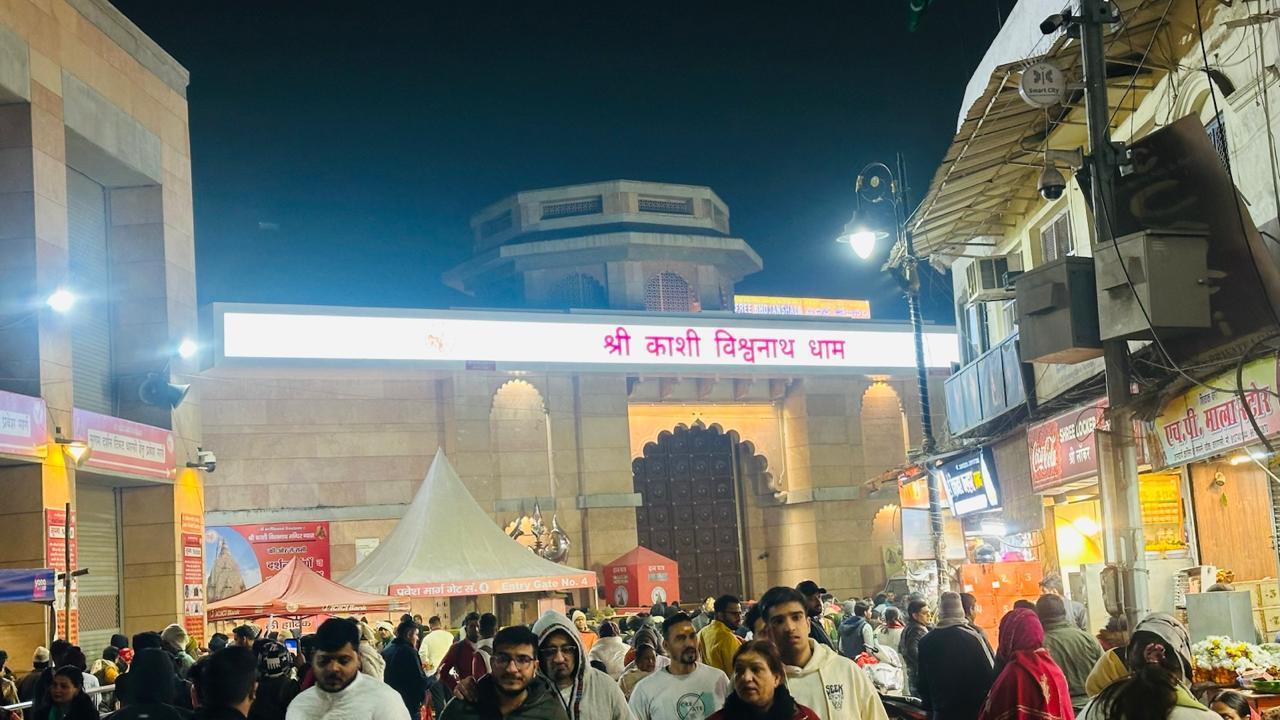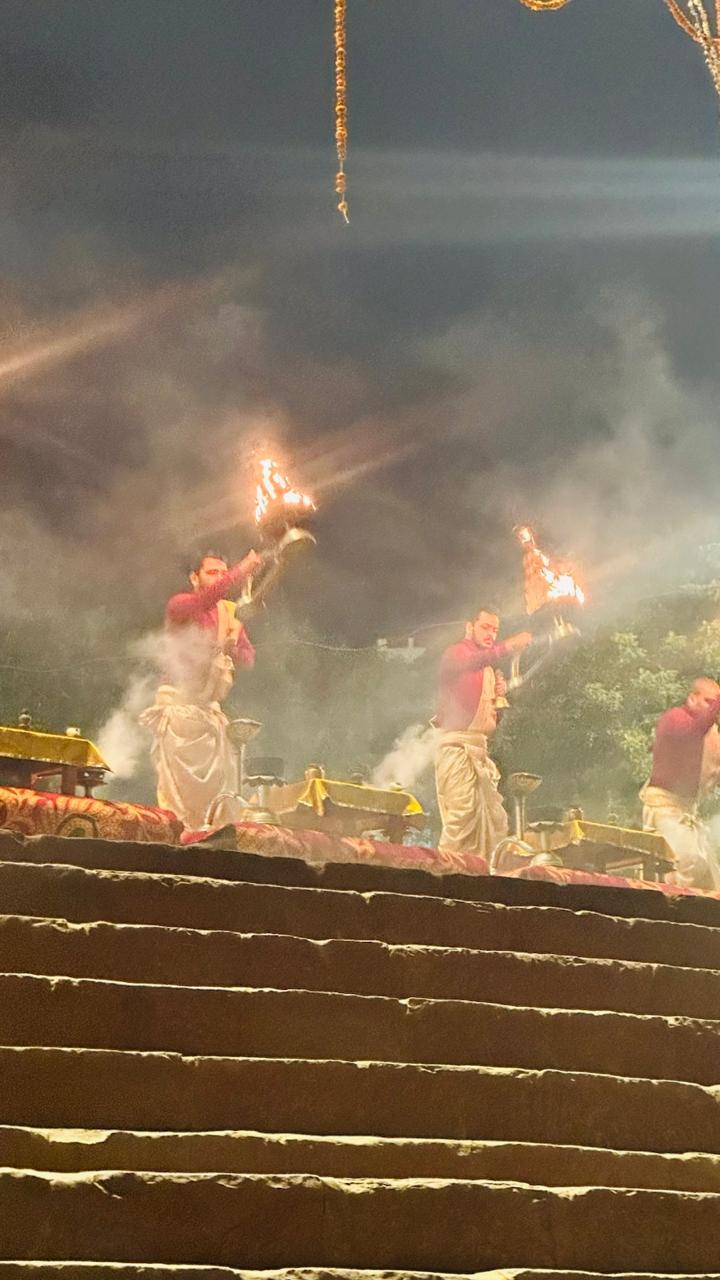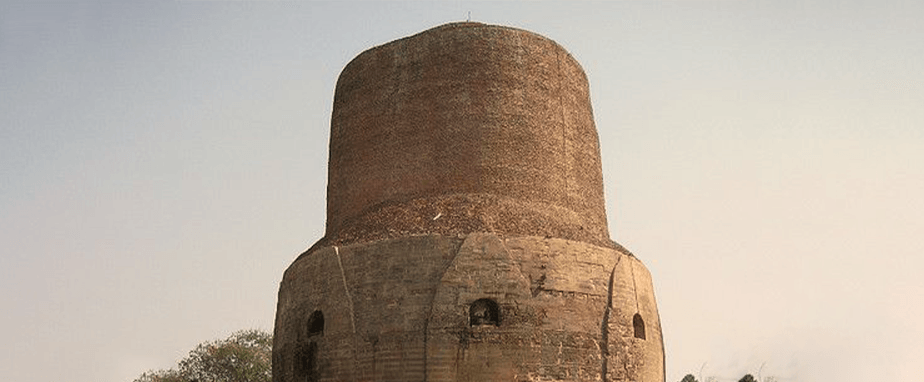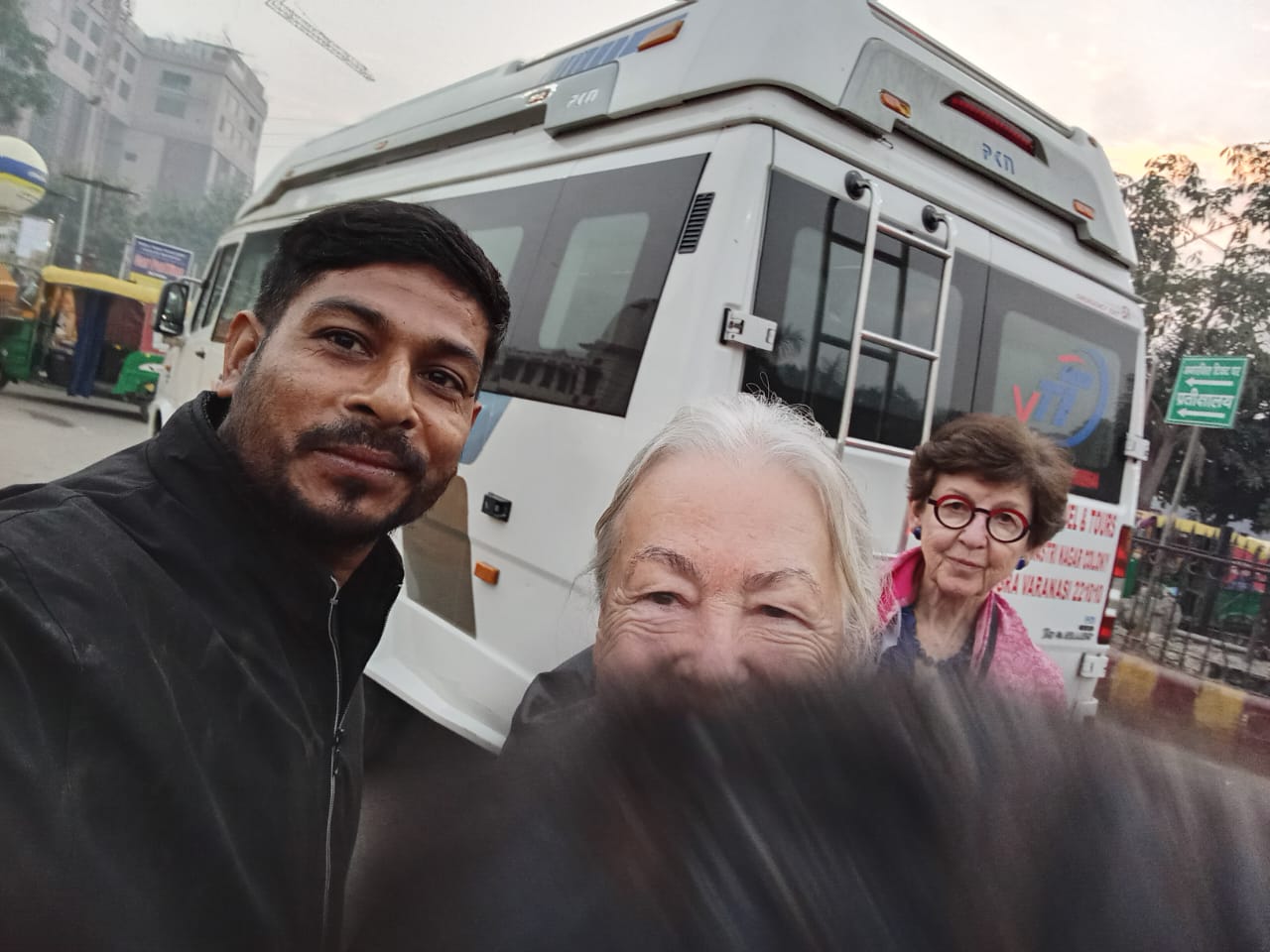Sarnath Buddhist Temple Guide: Complete Temple Timing, Architecture & Prayer Schedule
TL;DR - Which is the main Sarnath Buddhist temple and timing? Mulagandha Kuti Vihar is the main Sarnath temple, built on Buddha's meditation spot. Timing: 4:30-11:00 AM, 1:30-5:30 PM daily; evening prayers 4:00-5:00 PM (must attend). Features: Japanese frescoes depicting Buddha's life, sacred Bodhi tree, golden Buddha statue. Other temples: Thai Temple (8 AM-6 PM, golden architecture), Tibetan Temple (6 AM-6 PM, prayer wheels, morning chanting 6-7 AM), Sri Lankan Temple (white stupa). All temples free entry. Sarnath has 10+ international Buddhist temples representing different countries. From Varanasi: 10 km, 30 min. Best visit: October-March, attend evening prayers for spiritual experience.
Sarnath, the sacred site where Buddha delivered his first sermon 2,500 years ago, has become a living museum of global Buddhism. International Buddhist communities have built beautiful Sarnath Buddhist temples representing their unique traditions—from Thailand's golden spires to Tibet's prayer wheels, from Sri Lanka's white stupas to Japan's Zen simplicity.
This comprehensive guide covers all major Sarnath temples, their architecture, prayer timings, and practical visiting information, helping you experience the diversity and unity of Buddhist worship at one of the world's most sacred pilgrimage sites.
 Buddhist devotees at Sarnath temples during evening prayers
Buddhist devotees at Sarnath temples during evening prayers
Mulagandha Kuti Vihar: Main Sarnath Temple & Buddhist Worship Center
 Mulagandha Kuti Vihar - the main Sarnath Buddhist temple
Mulagandha Kuti Vihar - the main Sarnath Buddhist temple
History & Significance of Main Sarnath Temple
Mulagandha Kuti Vihar is the main Sarnath Buddhist temple and most important modern Buddhist worship site at Sarnath. Built in 1931 by Anagarika Dharmapala, founder of the Mahabodhi Society, this Sarnath temple commemorates Buddha's original "Fragrant Hut" (Gandhakuti) where he meditated during his first rainy season retreat at Sarnath after delivering his first sermon.
Why "Mulagandha Kuti":
- Mula: Original or root
- Gandha: Fragrant or perfumed
- Kuti: Hut or dwelling
- Meaning: "Original Fragrant Hut"
This name references the legendary monastery where Buddha lived while teaching at Sarnath around 528 BCE. The main Sarnath temple stands near the presumed site of that ancient dwelling, creating a direct connection between modern worship and Buddha's presence 2,500 years ago.
Architecture of Main Sarnath Buddhist Temple
Mulagandha Kuti Vihar Architectural Style:
| Feature | Details |
|---|---|
| Style | Modern Buddhist temple with traditional elements |
| Height | Approximately 15 meters (50 feet) |
| Material | Red sandstone and brick construction |
| Design | Square base with cylindrical tower (stupa-inspired) |
| Dome | Golden-topped dome visible from distance |
| Entrance | Large arched doorway with Buddhist symbols |
| Gardens | Manicured lawns surrounding temple complex |
Unique Architectural Features:
- Stupa-Inspired Design: The cylindrical tower mimics traditional Buddhist stupa architecture
- Golden Dome: Gleaming gold-plated top visible across Sarnath
- Open Veranda: Circumambulation path around main shrine
- Prayer Hall: Large interior space for 100+ worshippers
- Monk Quarters: Residential area for resident monks
- Bell Tower: Traditional Buddhist temple bell for prayer times
Magnificent Japanese Frescoes: Art Treasures of Main Sarnath Temple
The interior walls of Mulagandha Kuti Vihar main Sarnath temple feature breathtaking Japanese frescoes painted by renowned Japanese artist Kosetsu Nosu in the 1930s. These murals are considered masterpieces of 20th-century Buddhist art.
Fresco Scenes Depicted:
The frescoes cover Buddha's entire life from birth to death:
1. Birth of Siddhartha (East Wall)
- Queen Maya's dream of white elephant
- Birth in Lumbini gardens
- Seven steps and lotus flowers
- Sage Asita's prophecy
2. Four Sights (South Wall)
- Young prince encountering old age
- Witnessing sickness
- Seeing death
- Meeting peaceful ascetic
- Moment of awakening to suffering
3. Renunciation (West Wall)
- Leaving palace at midnight
- Cutting his hair with sword
- Exchanging royal robes for simple cloth
- Beginning spiritual quest
4. Enlightenment (North Wall)
- Meditation under Bodhi tree
- Mara's temptations (demons, beautiful women)
- Touching earth gesture
- Achieving enlightenment
5. First Sermon at Sarnath (Central Panels)
- Walking from Bodh Gaya to Sarnath
- Meeting five disciples
- Teaching in Deer Park (this location)
- Turning the Wheel of Dharma
6. Buddha's Teachings (Upper Panels)
- Teaching various disciples
- Performing miracles
- Visiting different kingdoms
- Spreading dharma across India
7. Mahaparinirvana (Exit Wall)
- Final sermon
- Lying between sala trees
- Disciples grieving
- Passing into nirvana at Kushinagar
Artistic Technique:
The Japanese frescoes in the main Sarnath temple showcase:
- Style: Traditional Japanese Buddhist art (similar to temple paintings in Kyoto)
- Colors: Rich earth tones, gold leaf accents, vibrant blues and reds
- Details: Intricate facial expressions, flowing robes, delicate landscapes
- Preservation: Remarkably well-maintained after 90+ years
- Viewing: Natural light from windows illuminates paintings beautifully
Photography: Interior photography rules vary—ask monks for permission before photographing the frescoes.
Sacred Bodhi Tree at Main Sarnath Temple
In the courtyard of Mulagandha Kuti Vihar Sarnath temple, a magnificent Bodhi tree creates a direct botanical link to Buddha's enlightenment.
Bodhi Tree Lineage:
This sacred tree at the main Sarnath temple traces its ancestry:
- Original Tree: Bodhi tree in Bodh Gaya where Buddha attained enlightenment (528 BCE)
- Anuradhapura Tree: Sapling taken to Sri Lanka by Emperor Ashoka's daughter Sanghamitta (288 BCE)
- Sarnath Tree: Sapling brought from Anuradhapura to Sarnath in 1931
Significance:
- Living Connection: Over 2,500-year lineage to Buddha's enlightenment
- Worship Site: Pilgrims circumambulate and meditate under tree
- Offerings: Flowers, incense, prayer flags placed at trunk
- Sacred Atmosphere: Creates peaceful meditation environment
Bodhi Tree Features:
- Species: Ficus religiosa (sacred fig)
- Age: 90+ years (planted 1931)
- Size: Large spreading canopy providing shade
- Location: Central courtyard, visible from all sides
- Protection: Fenced platform but accessible for close viewing
Buddhist pilgrims from around the world visit the main Sarnath temple specifically to pay respects to this sacred Bodhi tree, sitting beneath it for meditation as Buddha did under its ancestor.
Golden Buddha Statue in Main Shrine
The main prayer hall of Mulagandha Kuti Vihar Sarnath temple houses a beautiful gilded Buddha statue in the dharmachakra pravartana mudra (teaching gesture).
Statue Specifications:
| Feature | Details |
|---|---|
| Height | Approximately 3 meters (10 feet) |
| Material | Sandstone covered in gold leaf |
| Posture | Seated in padmasana (lotus position) |
| Hand Gesture | Dharmachakra mudra (turning wheel of dharma) |
| Expression | Serene, compassionate, peaceful |
| Halo | Ornate circular halo behind head |
| Base | Lotus throne pedestal |
| Offerings | Fresh flowers, incense, oil lamps |
Symbolism of the Gesture:
The dharmachakra pravartana mudra specifically commemorates Buddha's first sermon at Sarnath—making this statue particularly appropriate for the main Sarnath temple:
- Right Hand: Raised at chest level, thumb and index finger forming circle
- Left Hand: Similar gesture at lower level
- Meaning: The "Wheel of Dharma" being set in motion
- Significance: This exact teaching happened at this location 2,500 years ago
Worshippers at the main Sarnath Buddhist temple offer prayers, prostrate before the statue, and meditate in its presence, particularly during evening ceremonies.
Mulagandha Kuti Vihar Temple Timing & Prayer Schedule
Daily Opening Hours (Main Sarnath Temple):
- Morning Session: 4:30 AM - 11:00 AM
- Closed for Lunch: 11:00 AM - 1:30 PM
- Afternoon Session: 1:30 PM - 5:30 PM
- Weekly Off: None (open daily)
- Special Days: Extended hours during Buddha Purnima and major Buddhist festivals
Prayer & Ceremony Timings:
| Time | Activity | Duration | Open to Visitors |
|---|---|---|---|
| 4:30-5:00 AM | Morning chanting (monks only) | 30 min | No |
| 6:00-7:00 AM | Morning meditation | 60 min | Yes |
| 4:00-5:00 PM | Evening Prayer Ceremony | 60 min | Yes (Main Event) |
| 5:00-5:30 PM | Individual meditation | 30 min | Yes |
Evening Prayer Ceremony (4:00-5:00 PM) - Must-Experience:
The highlight of visiting the main Sarnath temple is attending the evening prayer ceremony:
What Happens:
- Bell Ringing (3:55 PM): Announcement bell calls devotees
- Gathering (4:00 PM): Monks in orange robes enter prayer hall
- Chanting (4:05-4:35 PM):
- Pali chants from Buddhist scriptures
- Rhythmic recitation by 5-10 monks
- Visitors may sit silently on floor
- Meditation (4:35-4:50 PM):
- Guided silent meditation
- Focus on breath and dharma teachings
- Dedication (4:50-5:00 PM):
- Merit dedication chant
- Blessings for all beings
- Final prostrations
Experience Tips:
- Arrive 10 minutes early (3:50 PM) to get good seating
- Sit cross-legged on floor mats provided
- Remove shoes outside prayer hall
- Maintain complete silence during chanting
- Stay for full ceremony (leaving early considered disrespectful)
- Photography not allowed during prayers
Languages: Chanting in Pali (ancient Buddhist language); explanations sometimes in Hindi/English
Visiting the Main Sarnath Temple: Practical Information
Entry & Fees:
- Admission: FREE (donations welcome)
- Shoe Storage: Free (remove before entering)
- Suggested Donation: ₹20-100 (optional)
- Photography: Ask permission; usually allowed in courtyard, not during prayers
Dress Code:
- Required: Modest clothing covering shoulders and knees
- Men: Long pants, shirt with sleeves
- Women: Long skirt/pants, shoulders covered, scarf recommended
- Forbidden: Shorts, tank tops, revealing clothing
- Shoes: Must be removed before entering temple building
What to Bring:
- ✅ Respectful clothing
- ✅ Meditation cushion (optional—floor mats provided)
- ✅ Donation (cash)
- ✅ Camera for courtyard/Bodhi tree (ask permission)
- ❌ Leather items (some Buddhists consider disrespectful)
- ❌ Alcohol/meat (not allowed in Buddhist temples)
Etiquette at Main Sarnath Temple:
- Walk clockwise around Bodhi tree and shrine (Buddhist tradition)
- Don't point feet toward Buddha statue (sit cross-legged)
- Speak softly; maintain peaceful atmosphere
- Don't touch or lean on Buddha statues
- Follow monks' instructions during ceremonies
- Photography only in designated areas
Best Time to Visit:
- For Peace: Early morning 6:00-8:00 AM (fewer tourists, morning meditation)
- For Ceremony: Evening 4:00-5:00 PM (prayer service)
- For Photography: Late afternoon 3:00-4:00 PM (good light on Bodhi tree)
- Season: October-March (pleasant weather, 10-25°C)
Duration: 45-90 minutes (longer if attending evening prayers)
Thai Temple Sarnath: Golden Buddhist Architecture
 Thai Temple with characteristic golden spires and colorful architecture
Thai Temple with characteristic golden spires and colorful architecture
Thai Temple Architecture & Design
The Thai Temple Sarnath (officially Wat Thai Sarnath) showcases classic Thai Buddhist temple architecture brought to India by the Thai government to serve Thai Buddhist pilgrims.
Architectural Features:
| Feature | Description |
|---|---|
| Style | Traditional Thai Rattanakosin style |
| Roof | Multi-tiered with upward-curving eaves (cho fa ornaments) |
| Colors | Gold, red, green with intricate details |
| Spires | Pointed golden chedi (stupa) towers |
| Walls | Ornate carvings and gold leaf decorations |
| Entrance | Naga (serpent) sculptures guarding stairs |
| Materials | Teak wood, gold leaf, colored glass, marble |
Distinctive Thai Elements:
- Cho Fa: Bird-like finials on roof peaks (representing Garuda)
- Naga Staircases: Multi-headed serpent balustrades
- Gables: Triangular pediments with intricate gilt carvings
- Golden Buddha: Thai-style Buddha statues (elongated features, flame cranial protuberance)
- Temple Bells: Thai bronze bells for prayer announcements
- Mural Paintings: Thai Buddhist Jataka tales inside
Photography: The golden exterior of the Thai Temple Sarnath is exceptionally photogenic, especially in afternoon sunlight (3:00-5:00 PM).
Thai Temple Timing & Visiting
Opening Hours:
- Daily: 8:00 AM - 6:00 PM
- Closed: None (open every day)
- Special Ceremonies: On Thai Buddhist holidays (Makha Bucha, Visakha Bucha, Asalha Puja)
Thai Buddhist Practices at Sarnath:
Thai pilgrims visiting this Sarnath temple typically:
- Offer lotus flowers and incense sticks
- Light oil lamps at Buddha shrine
- Chant in Thai Pali tradition
- Pour water for merit dedication
- Circumambulate the main shrine three times
Entry: Free with donations welcome
Features for Visitors:
- Thai-language scripture library
- Information boards in Thai and English
- Rest area for Thai pilgrimage groups
- Thai-speaking monks available for blessings
- Thai Buddhist souvenirs and books
Tibetan Temple Sarnath: Prayer Wheels & Gelug Tradition
Tibetan Temple Architecture
The Tibetan Temple Sarnath (officially Sarnath Tibetan Temple managed by Central Institute of Higher Tibetan Studies) represents Tibetan Buddhist Gelug tradition with distinctive Himalayan architecture.
Tibetan Architectural Style:
| Feature | Description |
|---|---|
| Colors | Deep reds, yellows, whites (traditional Tibetan) |
| Walls | Thick walls sloping inward (earthquake resistance) |
| Windows | Small trapezoid windows with ornate frames |
| Prayer Flags | Colorful lungta (wind horse) flags |
| Prayer Wheels | Large copper cylinders with mantras |
| Roof | Flat with golden dharma wheel and deer statues |
| Entrance | Ornate wooden doors with Tibetan symbols |
Unique Tibetan Elements:
-
Prayer Wheels:
- Line the circumambulation path
- Each contains thousands of printed mantras ("Om Mani Padme Hum")
- Spinning clockwise releases prayers into the wind
- 20+ wheels around temple perimeter
-
Thangka Paintings:
- Silk scroll paintings of Buddhist deities
- Intricate Tibetan artistic tradition
- Green Tara, White Tara, Medicine Buddha common subjects
- Some historic thangkas over 100 years old
-
Butter Lamps:
- Traditional yak butter oil lamps
- Devotees offer lamps for merit
- Hundreds of small lamps flickering in prayer hall
- Creates warm, sacred atmosphere
-
Mandala Art:
- Geometric representations of Buddhist cosmos
- Colorful sand mandalas occasionally created
- Wall mandalas in prayer hall
Tibetan Temple Timing & Prayer Schedule
Opening Hours:
- Daily: 6:00 AM - 6:00 PM
- Closed: None (open every day)
- Lunch: 12:00-2:00 PM (reduced access)
Prayer Timings:
| Time | Activity | Language | Visitors Welcome |
|---|---|---|---|
| 6:00-7:00 AM | Morning prayers | Tibetan | Yes |
| 4:00-5:00 PM | Evening puja | Tibetan | Yes |
| Special days | Extended ceremonies | Tibetan/English | Yes |
Losar (Tibetan New Year): Major celebration at temple (February/March) with special prayers, butter sculpture displays, and Tibetan cultural programs.
What Makes Tibetan Temple Unique at Sarnath:
- Gelug Tradition: Dalai Lama's school of Tibetan Buddhism
- Monk Debates: Sometimes witness philosophical debates (in Tibetan)
- Tibetan Culture: Experience Himalayan Buddhist traditions
- Prayer Wheel Circuit: Walk clockwise spinning wheels for merit
- Tibetan Community: Meet Tibetan Buddhist refugees and students
Entry: Free (donations appreciated)
Sri Lankan Temple Sarnath: Sinhalese Buddhist Tradition
Sri Lankan Temple Design
The Sri Lankan Temple Sarnath (officially Mahabodhi Society Sri Lankan Temple) showcases Sinhalese Buddhist architecture with distinctive white stupa design.
Architectural Characteristics:
| Feature | Description |
|---|---|
| Color Scheme | Predominantly white with gold accents |
| Stupa | Classic Sri Lankan bell-shaped dagoba |
| Pillars | White painted columns with carved capitals |
| Garden | Lush tropical plants, palm trees |
| Buddha Statues | Sri Lankan artistic style (round faces, serene expressions) |
| Entrance Arch | Torana (ornamental gateway) with Buddhist symbols |
Sri Lankan Buddhist Features:
- Bodhi Tree Shrine: Separate shrine for Bodhi tree worship (important in Sri Lankan Buddhism)
- Moon Stone: Semi-circular carved stone at entrance steps (Sinhalese tradition)
- Guard Stones: Ornate vertical stones at doorways
- Pond: Lotus pond in garden (common in Sri Lankan temples)
- Relic Chamber: Interior shrine for Buddha relics
Sri Lankan Temple Visiting Information
Timing:
- Daily: 6:00 AM - 6:00 PM
- Closed: None
- Lunch Break: 12:00-2:00 PM (temple open, ceremonies paused)
Special Features:
- Sri Lankan Monks: Resident monks from Sri Lanka conduct daily rituals
- Sinhala Chanting: Prayers in Sinhala language (beautiful melodic style)
- Vesak Celebrations: Major festival (May full moon) with lanterns and decorations
- Poson Day: June celebration marking Buddhism's arrival in Sri Lanka
- Dhamma School: Weekend Buddhist teachings for children
Pilgrim Facilities:
- Accommodation for Sri Lankan pilgrims
- Sri Lankan vegetarian meals (on request for groups)
- Sinhala-speaking guidance
- Buddhist books in Sinhala and English
Entry: Free with donations welcome
Other International Buddhist Temples at Sarnath
Japanese Temple (Nippon Temple)
Style: Zen minimalist aesthetic
Architecture: Simple wooden structure, rock garden
Unique Feature: Zen meditation hall (zazen)
Timing: 7:00 AM - 5:00 PM
Special: Quiet contemplation atmosphere
Chinese Temple (China Buddhist Temple)
Style: Chan (Zen) Buddhist tradition
Architecture: Traditional Chinese temple with curved roofs
Unique Feature: Chinese calligraphy, jade Buddha
Timing: 7:00 AM - 5:00 PM
Special: Chinese Buddhist sutras and art
Burmese Temple (Myanmar Temple)
Style: Myanmar Buddhist tradition
Architecture: Golden pagoda-style stupa
Unique Feature: Burmese script inscriptions
Timing: 8:00 AM - 5:00 PM
Special: Theravada tradition focus
Korean Temple
Style: Korean Buddhist architecture
Architecture: Colorful multi-tiered roof, dancheong paintings
Unique Feature: Korean lantern displays
Timing: 8:00 AM - 5:00 PM
Special: Korean Buddhist ceremonies




